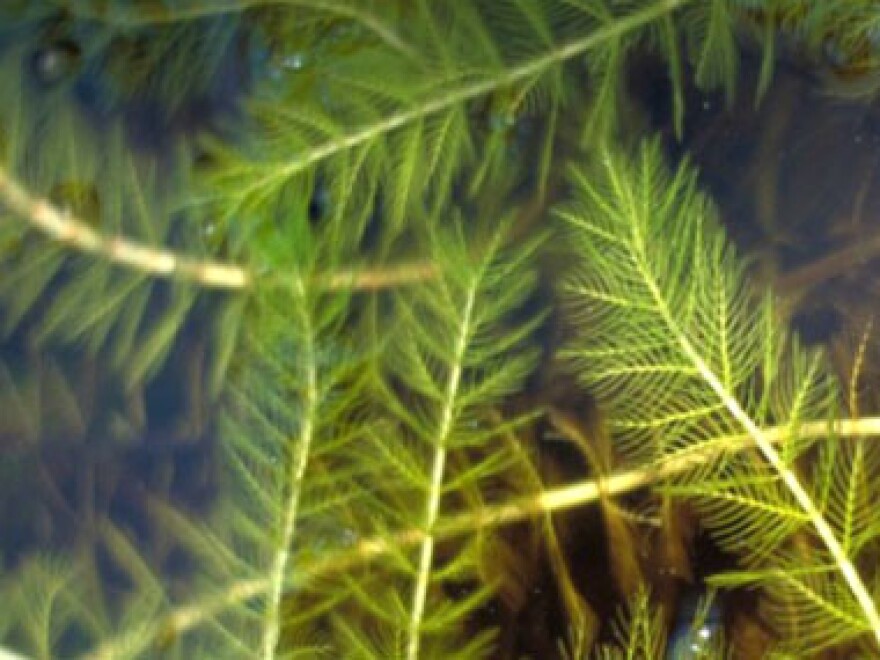The Iowa Department of Natural Resources will treat an invasive species that was detected in the Iowa Great Lakes last month. Local organizations are coming together to tackle the quick spread of Eurasian watermilfoil in East Okoboji.
The fast-spreading invasive species can cause dense mats of vegetation that disrupt recreation and overcome natural plants. But, eradicating it comes with a big price tag: $335,000.
Spirit Lake Fisheries Biologist Mike Hawkins said they’ve been able to raise the funds quickly, with help from local government and water protection groups. He said the community wants to invest in a long-term solution.
“A very unanimous decision was that if there was a chance that if we could eradicate this plant, that we should take that chance and go very aggressively towards completely getting rid of the plant,” Hawkins said.

The East Okoboji Lakes Corporation has pledged to commit $50,000. Organization treasurer Terry Wilts said the group wanted to act fast, so there was no potential for the Eurasian watermilfoil’s obstructive presence to hurt recreational use of the lake in the summer.
“It is absolutely the engine of northwest Iowa as far as tourism goes,” Wilts said. “There are hundreds of millions of dollars spent by people here. And with a lake that can’t be used, they're going to want to go somewhere else.”
The organization is just one of many who have committed to fund the treatment of the lake. The Dickinson County Board of Supervisors, the city of Milford and other water protection groups, have all pledged to help cover the costs of treating over 1900 acres of the lake.
So far, the invasive species has infiltrated East Okoboji, Upper Gar, Lake Minnewashta and the Lower Gar. Iowa DNR aquatic vegetation management biologist Jason Euchner said the agency will also focus on emphasizing protection measures boaters can take to limit its spread.
“A fragment can stick to a boat and be transported to another area,” Euchner said. “All it has to do is drift into the sediment and form a whole new plant.”
The DNR will begin applying herbicides to target the species this week, and continue until next spring. Its application will not impact native species, or recreational use of the lake.




